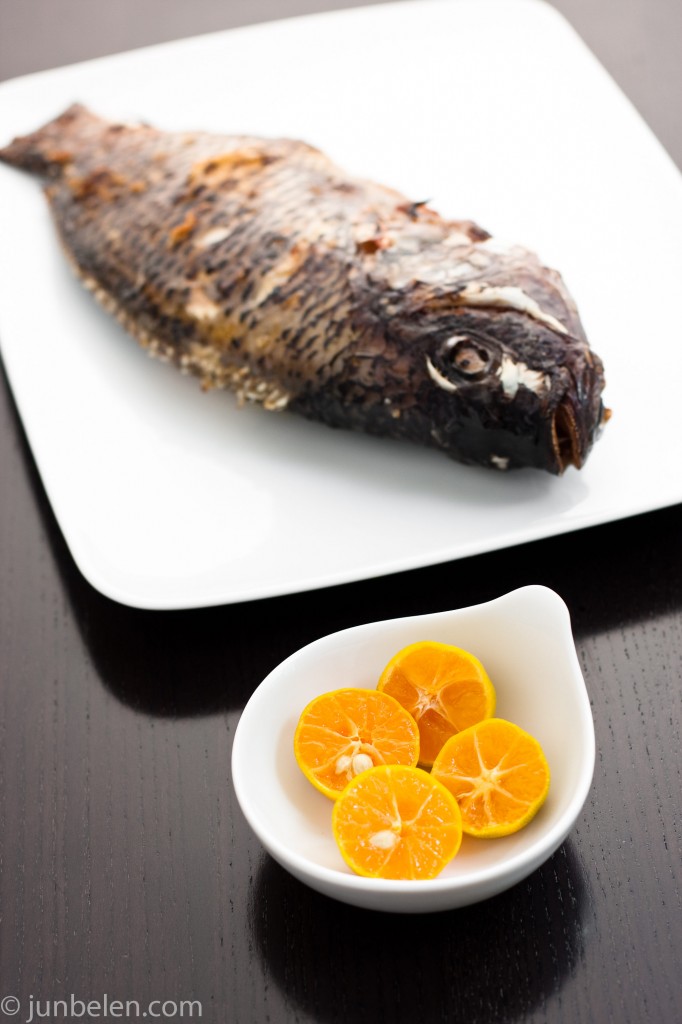Two things are ever-present on a Filipino table. First, there’s always a plate of rice. It’s either steaming hot or it’s fresh-out-of-the-fridge cold — leftovers from the day before, which are sometimes fried with lots of sea salt and garlic. I grew up having rice three times a day and, on occasion even for a mid-day snack like back in those days when I would come home from school and wolf down a plate of fried hot dog or fried spam with a heap of cold rice before I dive in to do my homework. Good times.
Aside from rice, there are always dipping sauces, which Filipinos call sawsawan [sou-sou-wuhn]; sawsaw [sou-sou] means to dip in Filipino. Dipping sauces enhance and liven up the flavors of Filipino dishes, from soups and stews to fried and grilled meats. Seasoning dishes doesn’t end in the kitchen but continues in the table where everyone gets the chance to fine-tune the flavors according to his or her liking.
What’s in a dipping sauce? You start with the basic sauce: soy sauce, fish sauce, fish paste, shrimp paste, or vinegar. Add garlic, ginger or onions for spice. Add cayenne peppers for heat. Add fruits or fruit juices like green mango, tomatoes, or calamansi for acidity. There are no rules; it’s a veritable free-for-all. The salty is mixed with the sour: shrimp paste with green mango. The sour is mixed with the hot: vinegar with cayenne peppers. The ultimate goal is to create a sauce that will let the flavors of the dish, like chicken stewed in coconut milk or a simple grilled whole fish, to truly shine.
My favorite sawsawan is patis [puh-tis] or fish sauce mixed with calamansi. Patis is the amber-colored fermented fish sauce made from mostly mackerels, sardines, scads, and herrings. The pungent sauce is intensely salty and melds incredibly well with the biting citrus flavors of calamansi. Patis with calamansi dramatically enhances the delicate flavors of grilled or fried fish. Squeeze calamansi over a whole tilapia fresh off the grill and dip the sweet fish in calamansi-spiked fish sauce and you’ll be rewarded with a simple yet extraordinary meal.
Grilling Tilapia
whole tilapia or pompano, gutted, scaled and cleaned
sea salt
freshly ground black pepper
canola oil
calamansi or limes
fish sauce
Lightly coat the whole fish with olive oil to help prevent it from sticking to the grill. Generously rub and season the fish with sea salt and black pepper.
Gently lay the fish on a clean, hot, well-oiled grill. Grill until the fish is cooked through, around 5 to 8 minutes. Using a large spatula, flip the fish to grill the other side until the its is cooked through, another 5 to 8 minutes.
Squeeze calamansi on the grilled fish and serve hot with steamed rice, fish sauce and sliced calamansi.
Cooking Notes
1. Tilapia is my favorite fish for grilling or frying whole. It’s white flesh is firm with a mildly sweet flavor. I also love grilling whole pompano, which is also firm-fleshed and has a delicate flavor.
2. Make sure that the grill is clean, hot and well-oiled to help prevent the fish from sticking to the grill. A grill that is too hot may burn the fish skin without thoroughly cooking the meat.
3. Grilled freshly caught fish tastes incredibly good seasoned with just sea salt and black pepper. Add a spritz of calamansi or lime and then adjust the flavor by adding fish sauce. Grilling is healthier than frying but I would never turn down tilapia or pompano that is perfectly pan-fried. Calamansi and fish sauce are amazingly great with grilled or pan-fried pork chops and beef ribs, too.
4. Rufina is my choice of fish sauce, which is available in most Asian grocery stores and well-stocked American stores that sell Asian products.
5. Calamansi is extremely hard to find in North America, more so in colder climates. Limes or key limes are great substitutes.


Pingback: How to Make Chicken Arroz Caldo()
Pingback: How to Make Calamansi Tart with Candied Calamansi()
Pingback: How to Make Pesa (Boiled Fish and Vegetables in Ginger Broth)()
Pingback: Grilled Tilapia with Calamansi « Green Basket()